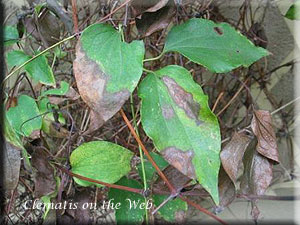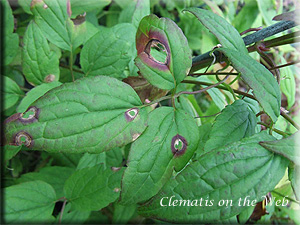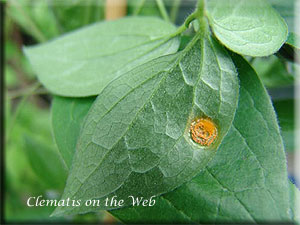Types affected
Most clematis are subject to a number of major and minor leaf spot diseases. The wilt fungi Phoma clematidina and Coniothyrium clematidis-rectae can cause damage to the foliage of the early large-flowering hybrids. Cultivars which are highly susceptible to stem lesions may not necessarily be so susceptible to leaf symptoms and vice-versa. Viticella types are usually relatively free from leaf spot diseases.
Symptoms
On the large early-flowering types, the wilt fungi cause lesions that are at first discrete and rounded, unlike the general drying out and blackening resulting from stem lesions.

Symptoms caused by Phoma clematidina

Symptoms caused by Coniothyrium clematidis-rectae
Leaf spots can be caused by a number of other fungi which are relatively weak pathogens and are usually not of such a serious nature.

Alternaria leaf spot

Other leaf spots
Conditions for disease development
Leaf spots caused by the wilt fungi develop during prolonged periods of rainy weather. Other leaf spots are also favoured by rainy weather. Plants growing in the open are most commonly affected. Old plants or plants which are not well looked after are more prone to symptoms.
Control Methods
It is not normally necessary to take special measures or to spray against leaf spot diseases. The fungicides described under ‘Wilt’ would be effective against leaf lesions caused by the wilt fungi but they would need to be applied protectively at regular intervals during the first half of the growing season.
Text ©2007 Paul Margot